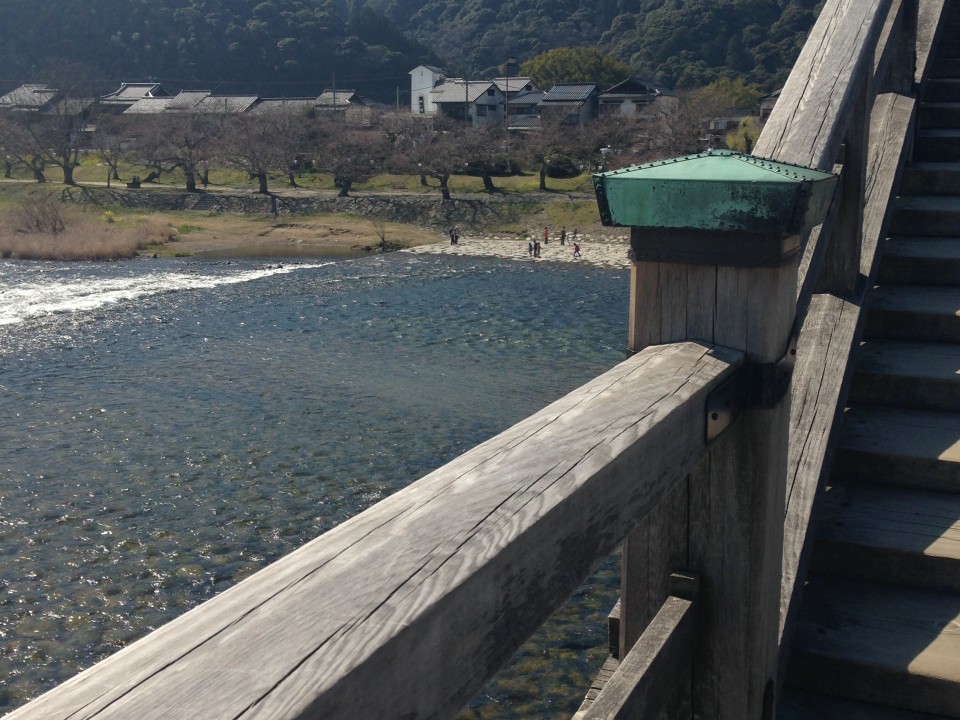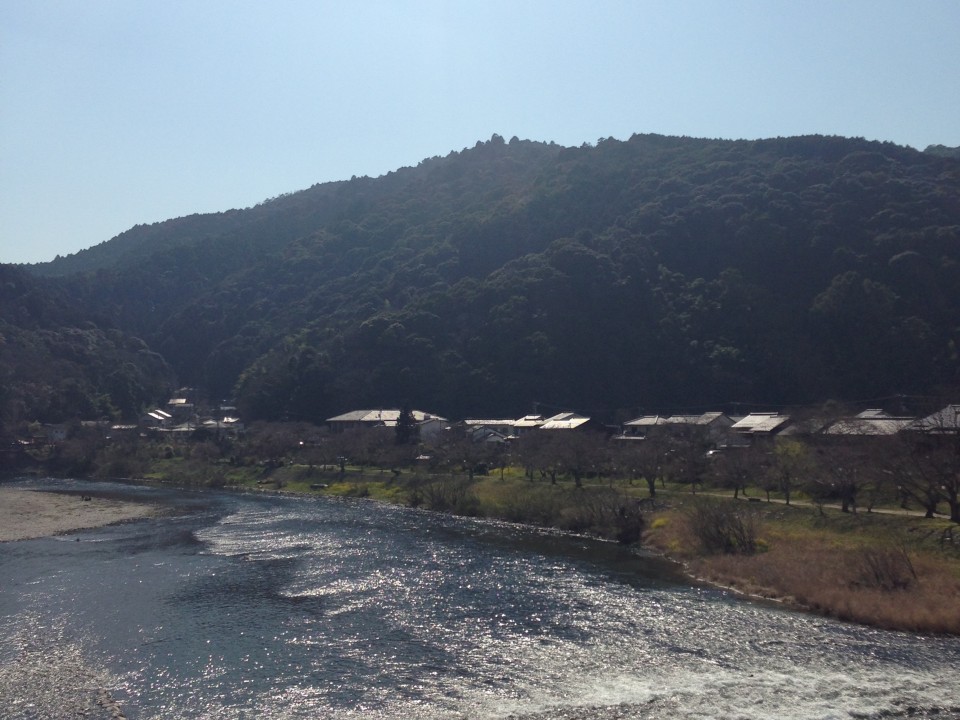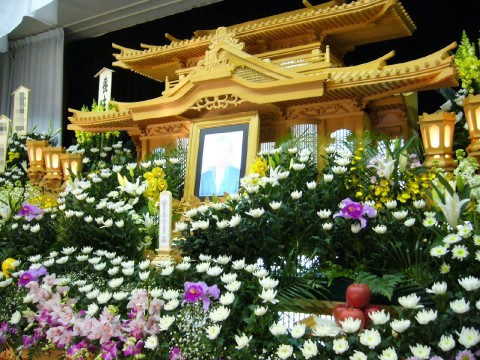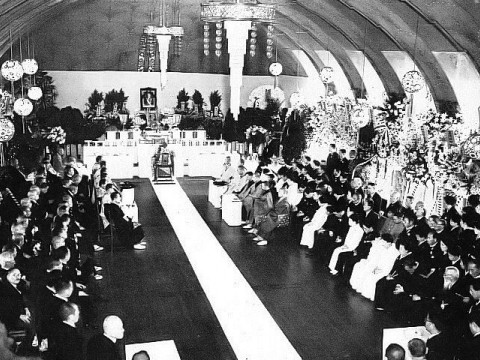One of the Most Ancient and Interesting Bridges in Japan
Spanning a Great Divide over the Ages
https://www.youtube.com/watch?v=IeL_cyyKVeM
This is a place steeped in history, pulsing with riveting stories of banished Samurai, castles and the Iwakuni Han. Home to Japan’s naval air force and the US Marines, Iwakuni is where the US and Japan work together to try and keep this part of the world stable.
I asked the taxi driver to stop by the bridge because on the way to LiveYell (note my other article on this quaint Wedding Hall) I could not help but notice its unusual shape and span. First built in 1673 and stable until a huge Typhoon took it down (temporarily) in 1950, the entire structure is a true work of art. Its five clean arches represent Western Honshu and each post along the bridge traditional and intricately designed steel caps. The regal Iwakuni Castle, built by Hiroie Kikkawa in 1608 (and then reconstructed again in 1962), is tucked into Mt. Shiroyama above and is visible during the entire trek across the bridge. The evergreen of the mountain perfectly offsets the aquamarine of the crystal Nishiki river flowing below.
There is now a cable car to take visitors to the peak and the castle, but I imagine travellers from days gone by would have to make the climb up to the royal dwelling on foot. I learned that only Samurai and Nobles could use the bridge in its heyday and that made me feel even more special as I stepped onto the light brown lattice.
Originally Constructed without Nails or Screws, Kintai Kyo is a Wonder of Ingenuity
Unbelievably, this bridge was originally constructed without a single nail or screw. Much like many temples and ancient structures in Japan the carpenters skillfully fit pieces together like the most beautiful and perfect wooden puzzle you can imagine. I always marvel at the way the huge stones that form the base of castles in Japan fit together so neatly and I grow more respectful of the stone masons and wood artisans who have left proud remnants of their work all across Japan. I bet they never thought a person like me would be stepping across and admiring their masterpiece in 2015.
The whole mountain ahead is deep evergreen. The white-washed castle looks securely nestled amid the trees and rock and the flat green river churns below. I can see the bright brown and yellow rocks shining brightly from under the surface. Visitors below roll up their pant legs and step barefoot into the cool water, and it is fun to hear the laughter mixed with gleeful cries of “Tsumetai!!” (chilly!) or “Kimochi II!” (feels great) drift up to where I am on the bridge.
I stopped several times to take in the view of flat river boats ready to take visitors to fish or explore the river, the entrance and exit gates which are themselves perfectly preserved booths of old, and of course the impressive technique used to fit the wood and steel elements together to create the structure holding all of us up.
Typhoons, re-building, repairs, and more are described in the history of the bridge. The people of this area have also surely seen their share of disaster, demolition and resolute rebuilding. I feel a surge of gratefulness towards the people of Iwakuni and how they have come through all of Japan’s intricate history. We’ve made it through and as an American standing on this bridge I feel a deep connection to its past and I share in the admiration of its beauty. I gaze at the bridge and I know that somehow I am might be spanning a great divide in my own personal, and yet necessary, way.

Former Deep Japan Writer














